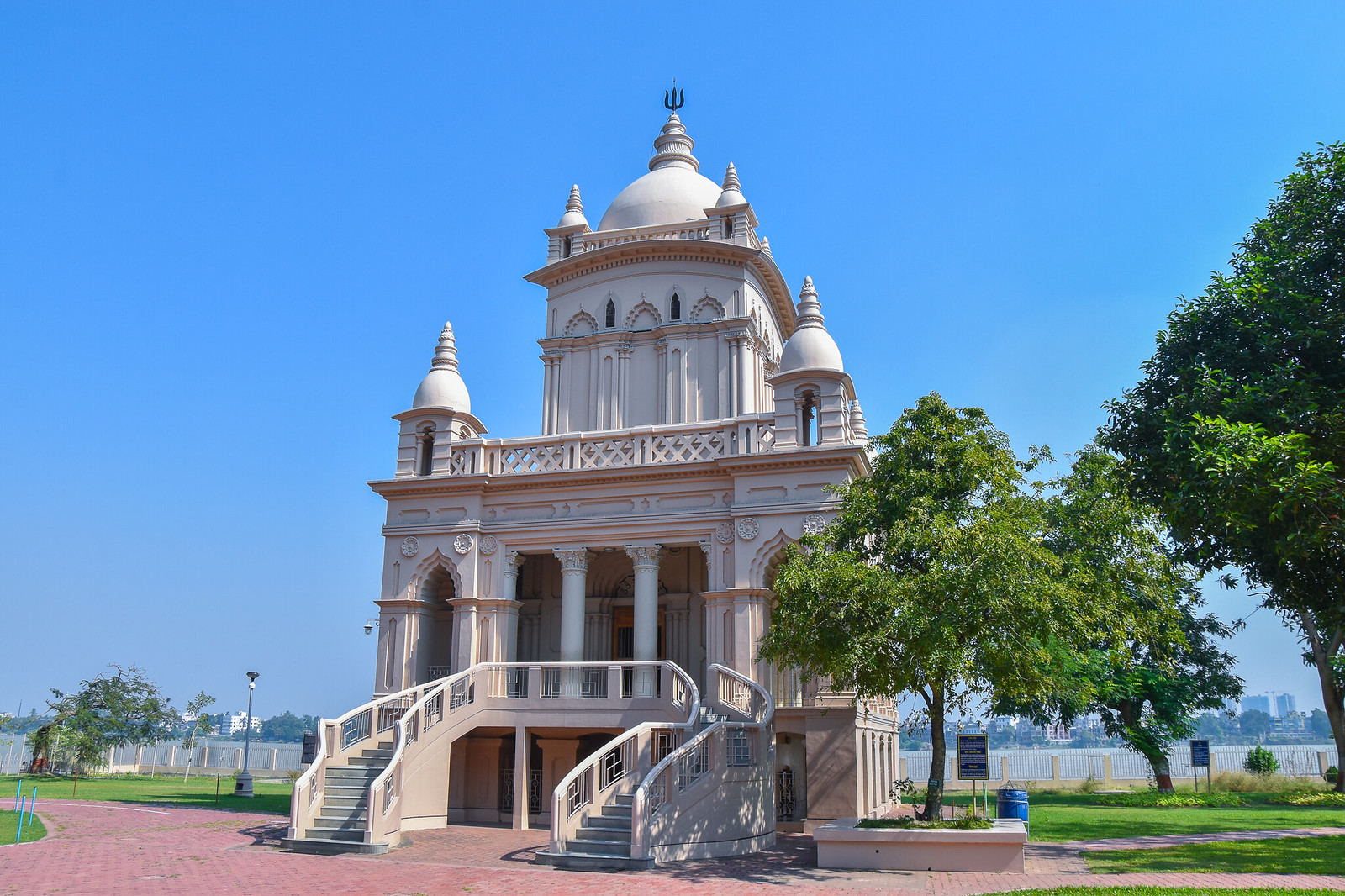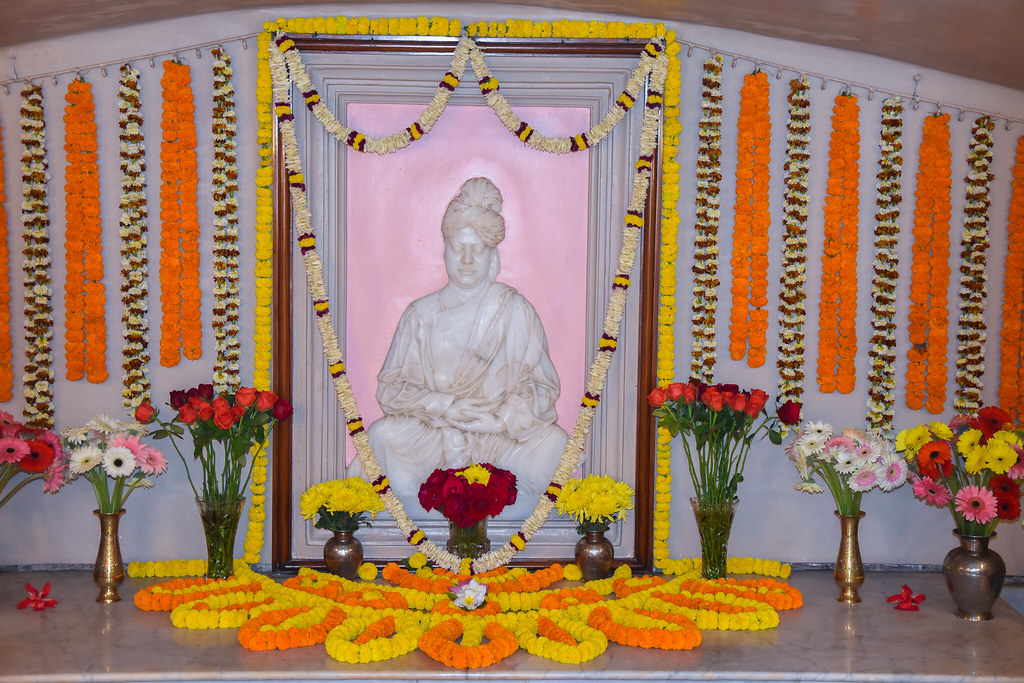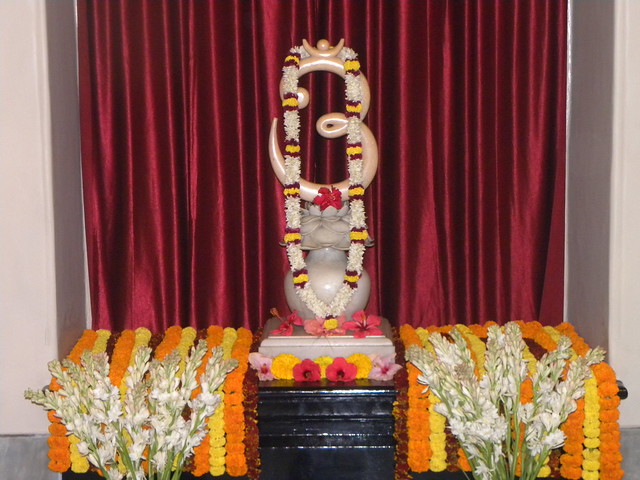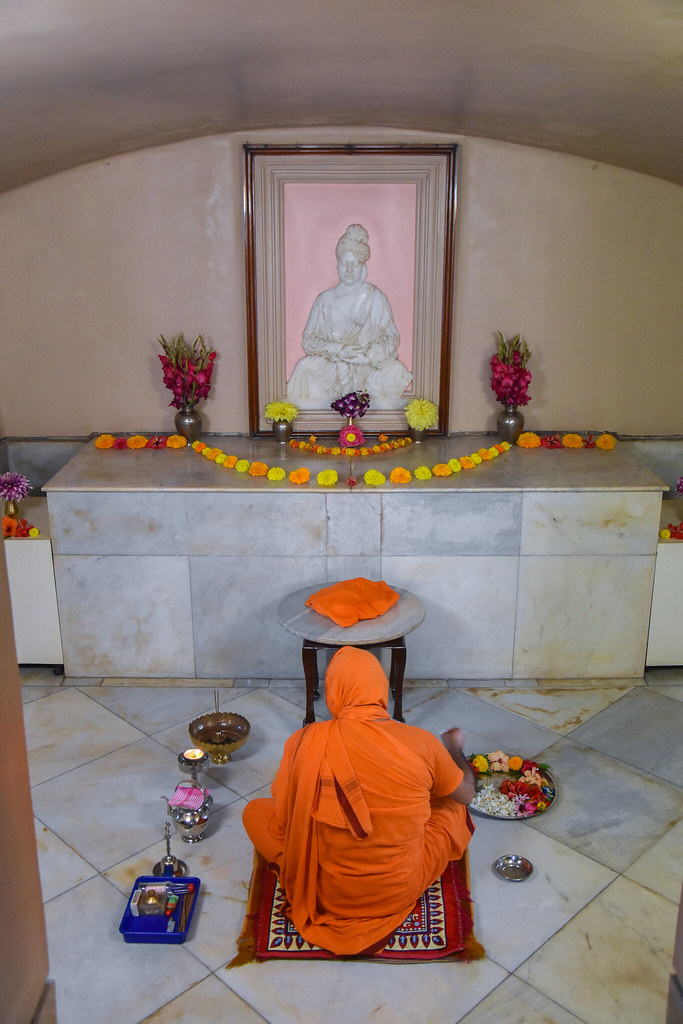Swamiji’s temple is a two-storeyed structure: upstairs there is a shrine with a marble image of Om in Bengali and on the ground floor is Swamiji’s shrine with a marble relief of Swamiji. The shrine floor is below the ground level because that part of the land was very low when the temple was built.
This temple stands on the spot where Swamiji’s mortal remains were consigned to flames. The place was chosen by Swamiji himself. His Life records: ‘Three days before his passing away, as the Swami was walking up and down on the spacious lawn of the monastery in the afternoon with Swami Premananda, he pointed to a particular spot on the bank of the Ganga, and said to his brother-monk gravely, “When I give up the body, cremate it there!” (He passed away on 4 July 1902.) On that very spot stands today a temple in his honour.’
Swami Vijnanananda looked after the temple construction. Before the commencement of the work, he was seen immersed in the thoughts of Swamiji. He used to talk of Swamiji constantly and meditate upon him. He was then living at the Ramakrishna Math at Allahabad. Often he visited the nearby Bharadwaj Ashram and saw the images of the Saptarshis (Seven Sages) and intently observed them, for Sri Ramakrishna had seen Swamiji as one among the seven sages of the Saptarshimandala (plane of Seven Sages). He even had an oil painting of the Saptarshi-mandala made for display in his room. He repeatedly said, ‘Swamiji is all-pervading in the universe. However, his abode is the Saptarshi-mandala.’
Swamiji’s temple as well as the Om temple upstairs were declared open in January 1924.
However, many were not impressed by the flight of stairs leading to the Om temple. Known for her refined taste, Miss McLeod wrote that the steps were ‘steep, high and narrow and not at all fitting to Swamiji and his thinking’. She did not stop with mere criticism, but made efforts to better the stairs. She got a design from the Villa d’ Este in Italy, which was famous for its sweeping and curly stairs, and altered the stairs accordingly.
Sri Ramakrishna once referred to Swamiji as Shiva and himself as his Shakti. There are instances of some of his brother disciples having had the vision of Swamiji as Lord Shiva. We have seen the oval-crystal in Swamiji’s room, got made by Miss McLeod, in which Swamiji is conceived of as Lord Shiva. Symbolically, the apex of Swamiji’s temple is adorned with a nine foot trishula, a trident, which is a symbol of Lord Shiva. In 1939 Miss McLeod got the heads of the trident covered with gold.
Vilva Tree: There is a Vilva tree adjacent to the right-side stairs leading to the Om temple. On the same spot stood the original Vilva tree under which Swamiji used to sit.







